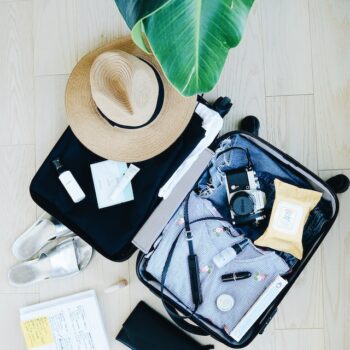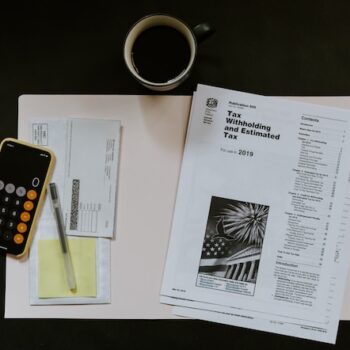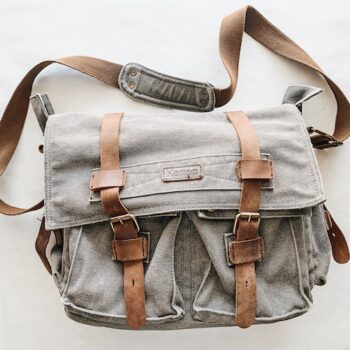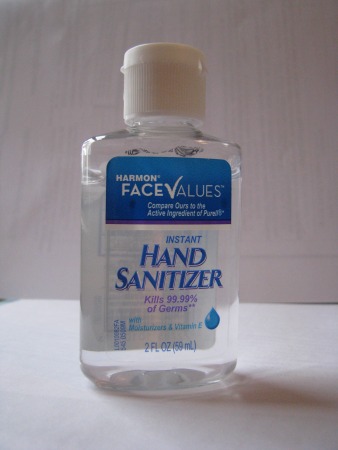
In researching how to make our own homemade disinfecting hand sanitizer, we came across a lot of different recipes with varying amounts of ingredients but with little (if any) explanation on why certain ingredients were used. Most used isopropyl alcohol (rubbing alcohol), aloe vera gel, and some essential oils for fragrance. Some even claimed that essential oils prevented viruses; however, all the warning letters sent to essential oil retailers would mean the FDA does not agree.
They might smell great, but would they be effective sanitizers against bacteria and viruses? One additional criteria was whether it would be cost effective and practical to make our own?
Did you know an alcohol-based hand sanitizer must have at least 61% but no more than 80% alcohol to be effective? And that it needs to contain water (roughly 15-25%)? And if you want it to also moisturize your skin, you only need 1.5%-2% aloe vera or glycerin? (links to references are below)
Spoiler
If you’re not interested in reading the background information or other recipes provided below, here is the recipe we ended up using to make a hand sanitizing spray or hand rub (not gel). A recipe with ingredients needed for a gel is further down the page.
The goal was to reach a target strength of between 61% – 70% alcohol (a minimum of 61% but no more than 80% alcohol is optimal for an effective sanitizer); comparable to commercial hand sanitizers. Use the rubbing alcohol-to-water ratio depending on the strength of isopropyl alcohol you have available.
If you don’t have or can’t find distilled water, you can used water that has been boiled and treated with hydrogen peroxide. Add 2 teaspoons of hydrogen peroxide to 1 cup of cooled, boiled water.
DIY Homemade Hand Sanitizer Disinfecting Spray Recipe
- If using 99% Isopropyl Alcohol (~65% strength)
- 2/3 cup 99% Isopropyl Alcohol
- 1/3 cup distilled water
- If using 91% Isopropyl Alcohol (~68% strength)
- 3/4 cup 91% Isopropyl Alcohol
- 1/4 cup distilled water
- If using 70% Isopropyl Alcohol (~61% strength)
- 3/4 cup + 1 TBSP 70% Isopropyl Alcohol
- 1 TBSP distilled water
- Add a drop of essential oil if you need fragrance.
- Put the solution in small travel-sized spray bottles.
- Shake thoroughly before each use, prior to spraying onto hands.
- Allow spray to dry on skin at least 15 seconds (same amount of time as the gel).
- Apply a skin moisturizer afterward.
You can increase the alcohol content up to 80%, but there must be water in the solution in order to be effective. You can also add aloe vera or glycerin to this mixture as a moisturizer, but you will need to reduce the amount of water by the amount of aloe vera or glycerin that is added. If you add a teaspoon of aloe vera, subtract a teaspoon of water. It won’t thicken the spray, but it can provide some skin moisturizing effect. You might be able to find some travel-sized fine mist spray bottles at the dollar store.
Alcohols lack sporicidal action, which is why the World Health Organization recommends adding 4% Hydrogen peroxide to solutions to kill any spores present in the alcohol, water, or the container.
Here are a few fine mist spray bottles from Amazon
Read more if you want to know why we skipped the aloe vera and why we went with a spray liquid instead of a gel. However, a recipe for a gel is available below.
So, exactly what ingredients and in what amounts would be needed to make a DIY hand sanitizer that actually sanitizes?
Commercial Antibacterial Hand Sanitizer Gel Ingredients (per 100 ml)
Active Ingredient
Isopropyl Alcohol 62ml
Inactive Ingredients
(the remaining 38ml)
Water
Trolamine (helps bind ingredients, neutralizes Carbomer to promote gelling link, link)
Glycerin (thickener and helps soothe the skin)
Propylene Glycol (emulsifier, skin hydration, stabilizer)
Alpha-Tocopherol (vitamin E)
Aloe Vera Leaf (gel for moisturizing)
Carbomer Homopolymer Type C (thickener, gelling properties, stabilizer link)
Hand sanitizers are a convenient way to disinfect your hands when you don’t have access to soap and water. It’s important to note that hand sanitizers are not effective if your hands are soiled or dirty, which would otherwise limit the sanitizer from actually having direct contact with skin.
The Two Important Ingredients
Studies have shown that solutions containing 60-85% isopropyl alcohol had the highest antimicrobial efficacy (link, link). Higher ratios of alcohol are actually less potent. The reason for this is that proteins (germs and viruses) are not denatured (denatured = destruction of the molecular structure) easily without water. (link) So water is necessary for effectiveness.
Aloe vera gel was used in almost all the other DIY recipes, and it contains 95% water so that would meet the water requirements if used in the right proportions. But once you dilute 1/3 cup aloe vera in 2/3 cup rubbing alcohol, you have a solution that’s almost as runny as if you had just used water and water is much less expensive. In commercial hand sanitizers, the aloe vera is there only in small amounts, primarily to replace some of the skin’s moisture that is lost due to the alcohol. Aloe vera is not used to thicken or make the solution gel.
At this point we know we need the right ratio of rubbing alcohol to water for it to be an effective sanitizer.
The Rest Of the Inactive Ingredients
We know that ingredients are typically listed by volume, meaning that ingredients are listed based on ingredients used higher quantities first, to those used in lesser quantities. So everything after water is primarily there to bind, thicken and stabilize the ingredients, and provide some moisturizing effect.
Trolamine is typically used at a ratio of no more tha 2.5% in cosmetics (link). So that would mean .95 ml
Food grade Propylene Glycol appeared to be added to help with keeping skin hydrated, it is typically added in ratios of 1% to 10% (link). Since we know that it is less than the Trolamine, we’ll guess a 1.5% ratio, and of the 38ml of inactive ingredients, would equal .6 ml.
This would mean that all the remaining ingredients represent decreasing percentages. Aloe vera, at best, is probably .5% to 1% of the inactive ingredients. It’s there for the benefits to your skin, not as a thickening agent.
Getting It To Gel
In commercial hand sanitizers, they use thickeners (not aloe vera) to get that gel-like consistency (link). Carbomer Homopolymer Type C is a common thickener for cosmetics and can increase in volume up to 1000 times to form thick solutions (link). Being the last ingredient on the list means it’s used in the lowest quantity.
Carbomer 940 can be purchased online as a cosmetic thickener, but it is a bit pricey and needs to be neutralized in order to gel properly. It is used at a ratio of 0.1% and 0.5%.
A few other sites mentioned used Xanthan Gum (link), Guar, or Pectin as a thickener. However, Pectin can harden and not sure how well all of them stabilize the ingredients. Xanthan Gum is typically used at a ratio similar to Carbomer of between 0.1% and 1%. We tested Xanthan Gum and the results are available below
All this information leaves us with knowing we need enough alcohol to keep disinfectant properties, enough water to increase the effectiveness, and something to thicken everything up.
View this YouTube tutorial if you would like to see a great comparison of various thickeners.
Xanthan Gum
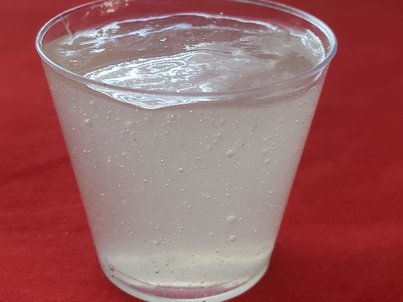
We wanted a clear gel but were unable to locate any Carbomer 940, so we tested Xanthan Gum as a thickener for our hand sanitizer which came as a white/off-white powder (we couldn’t find any clear xanthan gum). We mixed 1/4 tsp powder with 1 TBSP water and stirred rigorously. It did gel up quickly, but was not distributed evenly. It continued to thicken up in the water after letting it sit for an hour.
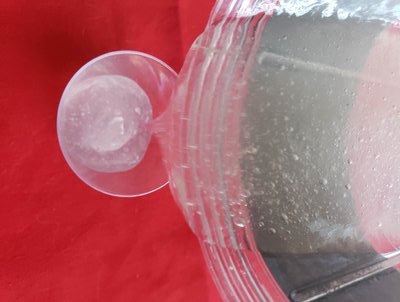
We poured our alcohol and other ingredients into a small food blender, tossed in the thickened Xanthan Gum, and pulsed the blender until the mixture appeared smooth and small air bubbles were suspended in the gel.
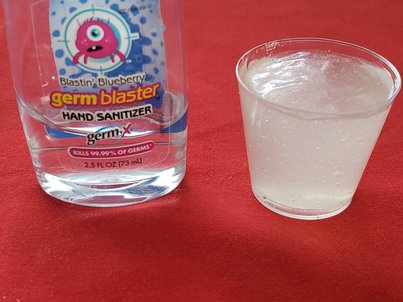
While we weren’t able to get a clear gel, the resulting hand sanitizer gel felt identical to commercial versions. Initially, we thought it felt a little sticky while drying, but that disappeared as soon as our hands were dry. We then applied the commercial hand sanitizer gel to compare, and found that it also felt a bit sticky until dry. Xanthan gum appeared to work well as a thickener. If you want a clear gel, use clear xanthan gum.
How Much Is It Going To Cost
If we were to purchase a 16 oz bottle of 91% Rubbing Alcohol ($2.99) and 50 grams of Carbomer 940 ($11.99), we could make 24 oz of hand sanitizer with our initial investment of $14.98. If we can buy an 8oz bottle of brand name sanitizer for $1.99, that would mean we’d be spending $6.97 for 24 ounces. $15 for DIY versus $7 ready-made.
The investment for Carbomer could probably be used 100 more time, reducing it’s cost per 24 oz batch. (Even by that calculation $11.99 divided by 100 applications = .12) we would be spending $3.12 per 24 ounce batch of hand sanitizer. So you would see a benefit to your investment after the second or third batch. However, you would still not have a guaranteed consistency of product.
So essentially, you would really only want to make your own homemade hand sanitizer if you just enjoying doing it yourself and don’t mind spending a little more even if it’s not the same consistency or has the same stability has store bought, or if there’s a shortage of hand sanitizer and DIY is the only option.
DIY Homemade Disinfecting Hand Sanitizer Gel Recipe
- 1 16 ounce bottle of 99% Isopropyl Alcohol (rubbing alcohol)
- 8 ounces distilled water (~237 ml)
- Thickener (.24 ml, follow directions; start with a quarter of a 1/8 teaspoon if unsure)
- If you will be adding any skin conditioning ingredients (aloe vera, propylene glycol, glycerin), reduce the water amount by the amount of conditioning ingredient.
Thoroughly combine the water and thickener until completely dissolved. Blend in rubbing alcohol and mix thoroughly. Add a few drops of essential oils if you want a little bit of fragrance. Without a thickener or binder, the solution will need to be shaken thoroughly before each use.
Probably the best, most economical solution is to make disinfecting hand sanitizer sprays, without using a thickener. The recipe is at the top of this article. Mix the alcohol and water and pour into small fine mist travel-size spray bottles. Shake the bottle well before each use and use a skin moisturizer afterward.
Other Recipes
The World Health Organization has a 2 gallon hand rub recipe intended for local production. It can be viewed here.
This recipe makes 10 liters of sanitizing hand rub. They recommend the final solution be poured into personal-sized bottles and be rested for 72 hours to kill any residual spores in the solution or in the bottles.
- 7515 ml 99% Isopropyl Alcohol (75%)
- 417 ml 3% Hydrogen Peroxide (4%)
- 145 ml Glycerol (or other skin conditioner) (1.5%)
- 1923 ml Distilled Water or cold boiled water (19%)
To convert this recipe for use with a 16 ounce (473 ml) bottle of isopropyl alcohol, use the following recipe:
- 1 16 ounce bottle 99% Isopropyl Alcohol
- 1 ounce 3% Hydrogen Peroxide
- 2 teaspoons Glycerin or Aloe Vera
- 4 ounces Distilled Water or cold boiled water
If you don’t have, or can’t find, 99% isopropyl alcohol, use the recipe at the top of this page to determine the correct amount of water necessary to achieve at least a 61% percent ratio of alcohol.






